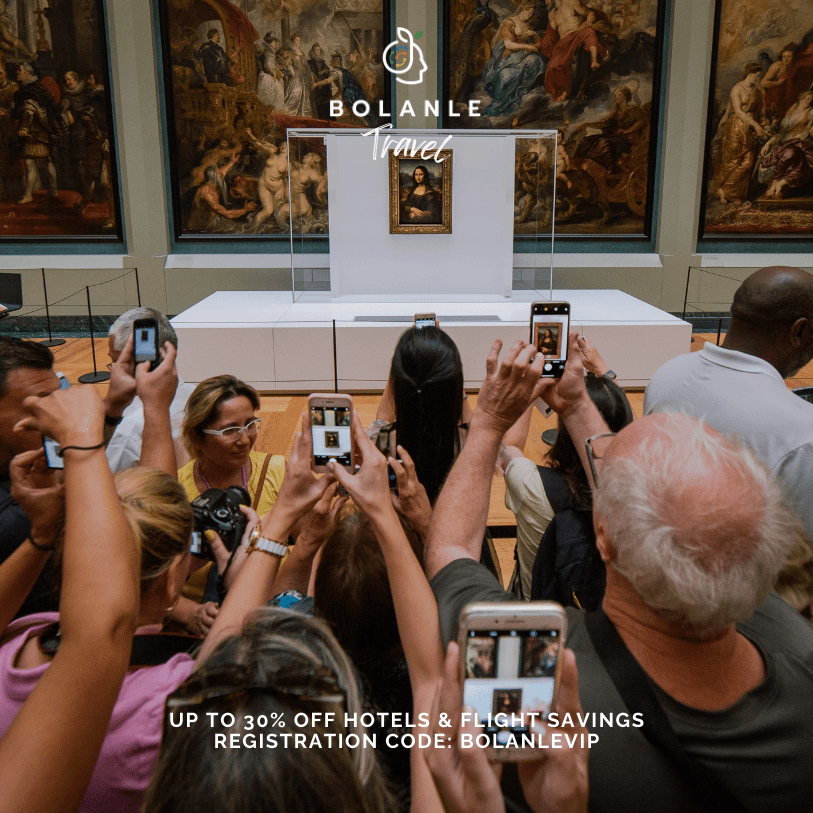Business
Startups Can Help Corporates Innovate 50% Faster? How You Can Benefit
In today’s rapidly evolving business landscape, innovation is the key to staying competitive. Surprisingly, many corporations are discovering that collaborating with startups can significantly accelerate their innovation processes. In fact, evidence suggests that partnering with startups can help corporates innovate up to 50% faster. Let’s explore how you can leverage this powerful synergy to drive your company’s growth and success.
The innovation gap between startups and established corporations is well-documented. Startups are known for their agility, fresh perspectives, and willingness to take risks. They often think outside industry norms and have the potential to disrupt existing markets or create entirely new ones. This innovative approach can be a game-changer for corporates looking to stay ahead of the curve.
A McKinsey survey revealed that top-performing companies innovated nearly twice as fast as their counterparts during the first year of the pandemic. This statistic underscores the critical importance of rapid innovation in today’s business environment. By partnering with startups, corporates can tap into this speed and agility, potentially cutting their innovation timelines in half.
So, how can you leverage this startup-driven innovation boost? Here are some strategies to consider:
1. Open Challenges: Launch open calls for startups that meet specific criteria. This approach allows you to identify new technologies and industry trends early on.
2. Corporate Accelerators: Implement structured programs that provide startups with mentoring, expert matching, and resources. This longer-term relationship helps evaluate potential synergies.
3. Venture Client Model: Engage in commercial collaborations where startups become suppliers. This hands-on approach helps identify innovative technologies and product providers that can enhance your competitiveness.
4. Corporate Venture Capital (CVC): Establish an investment fund to invest in promising startups. This not only provides financial returns but also gives you a stake in cutting-edge innovations.
The benefits of these collaborations extend beyond just speed. Startups bring fresh viewpoints, dedication to their ideas, and a willingness to challenge the status quo. They operate with small but complete teams, learn quickly, and are unencumbered by legacy systems or thinking. These qualities can inject new life into corporate innovation efforts.
Moreover, startups often excel at developing initial prototypes but may lack the resources and expertise to scale. This is where corporates can provide immense value, offering their experience in scaling operations and bringing products to market. It’s a win-win situation that combines the best of both worlds.
To make these collaborations successful, it’s crucial to establish clear communication, set mutual goals, and maintain flexibility[1]. Be prepared to adapt quickly to feedback and market changes. Remember, 75% of startups consider corporate collaboration crucial, yet only 27% are satisfied with their corporate relationships. This gap represents a significant opportunity for corporates willing to invest in meaningful partnerships.
By embracing startup collaborations, you’re not just accelerating innovation – you’re future-proofing your business. You’re tapping into a global network of ideas and technologies that can keep you at the forefront of your industry. Whether it’s developing new products, improving internal processes, or exploring new markets, startups can be your catalyst for rapid, meaningful innovation.
In conclusion, the potential to innovate 50% faster through startup collaborations is not just a possibility – it’s a reality that forward-thinking corporations are already leveraging. By implementing the right strategies and fostering a culture of open innovation, you can harness this power to drive your company’s growth and maintain a competitive edge in today’s fast-paced business world. Don’t let this opportunity pass you by – start exploring how startup collaborations can supercharge your innovation efforts today.
Stay Connected
Unlock impactful advertising opportunities with Bolanle Media. Our expert team crafts immersive experiences that captivate audiences, driving brand engagement and memorability. Let’s elevate your brand’s marketing strategy together.
Business
Why 9 Million Americans Have Left

The Growing American Exodus
Nearly 9 million Americans now live outside the United States—a number that rivals the population of several states and signals a profound shift in how people view the American dream. This mass migration isn’t confined to retirees or the wealthy. Thanks to remote work, digital nomad visas, and mounting pressures at home, young professionals, families, and business owners are increasingly joining the ranks of expats.

Rising Costs and Shrinking Wallets
Living in the US has become increasingly expensive. Weekly grocery bills topping $300 are not uncommon, and everyday items like coffee and beef have surged in price over the last year. Rent, utilities, and other essentials also continue to climb, leaving many Americans to cut meals or put off purchases just to make ends meet. In contrast, life in countries like Mexico or Costa Rica often costs just 50–60% of what it does in the US—without sacrificing comfort or quality.
Health Care Concerns Drive Migration
America’s health care system is a major trigger for relocation. Despite the fact that the US spends more per person on health care than any other country, millions struggle to access affordable treatment. Over half of Americans admit to delaying medical care due to cost, with households earning below $40,000 seeing this rate jump to 63%. Many expats point to countries such as Spain or Thailand, where health care is both affordable and accessible, as a major draw.

Seeking Safety Abroad
Public safety issues—especially violent crime and gun-related incidents—have made many Americans feel unsafe, even in their own communities. The 2024 Global Peace Index documents a decline in North America’s safety ratings, while families in major cities often prioritize teaching their children to avoid gun violence over simple street safety. In many overseas destinations, newly arrived American families report a significant improvement in their sense of security and peace of mind.
Tax Burdens and Bureaucracy
US tax laws extend abroad, requiring expats to file annual returns and comply with complicated rules through acts such as FATCA. For some, the burden of global tax compliance is so great that thousands relinquish their US citizenship each year simply to escape the paperwork and scrutiny.
The Digital Nomad Revolution
Remote work has unlocked new pathways for Americans. Over a quarter of all paid workdays in the US are now fully remote, and more than 40 countries offer digital nomad visas for foreign professionals. Many Americans are leveraging this opportunity to maintain their US incomes while cutting costs and upgrading their quality of life abroad.

Conclusion: Redefining the Dream
The mass departure of nearly 9 million Americans reveals deep cracks in what was once considered the land of opportunity. Escalating costs, inaccessible healthcare, safety concerns, and relentless bureaucracy have spurred a global search for better options. For millions, the modern American dream is no longer tied to a white-picket fence, but found in newfound freedom beyond America’s borders.
Business
Will Theaters Crush Streaming in Hollywood’s Next Act?

Hollywood is bracing for a pivotal comeback, and for movie lovers, it’s the kind of shake-up that could redefine the very culture of cinema. With the freshly merged Paramount-Skydance shaking up its strategy, CEO David Ellison’s announcement doesn’t just signal a change—it reignites the passion for moviegoing that built the magic of Hollywood in the first place.

Theatrical Experience Roars Back
Fans and insiders alike have felt the itch for more event movies. For years, streaming promised endless options, but fragmented attention left many longing for communal spectacle. Now, with Paramount-Skydance tripling its film output for the big screen, it’s clear: studio leaders believe there’s no substitute for the lights, the hush before the opening credits, and the collective thrill of reacting to Hollywood’s latest blockbusters. Ellison’s pivot away from streaming exclusives taps deep into what unites cinephiles—the lived experience of cinema as art and event, not just content.
Industry Pulse: From Crisis to Renaissance
On the financial front, the numbers are as electrifying as any plot twist. After years of doubt, the box office is roaring. AMC, the world’s largest theater chain, reports a staggering 26% spike in moviegoer attendance and 36% revenue growth in Q2 2025. That kind of momentum hasn’t been seen since the heyday of summer tentpoles—and it’s not just about more tickets sold. AMC’s strategy—premium screens, with IMAX and Dolby Cinema, curated concessions, and branded collectibles—has turned every new release into an event, driving per-customer profits up nearly 50% compared to pre-pandemic norms.
Blockbusters Lead the Culture
Forget the gloom of endless streaming drops; when films like Top Gun: Maverick, Mission: Impossible, Minecraft, and surprise hits like Weapons and Freakier Friday draw crowds, the industry—and movie fans—sit up and take notice. Movie-themed collectibles and concession innovations, from Barbie’s iconic pink car popcorn holders to anniversary tie-ins, have made each screening a moment worth remembering, blending nostalgia and discovery. The focus: high-impact, shared audience experiences that streaming can’t replicate.
Streaming’s Limits and Studio Strategy
Yes, streaming is still surging, but the tide may be turning. The biggest franchises, and the biggest cultural events, happen when audiences come together for a theatrical release. Paramount-Skydance’s shift signals to rivals that premium storytelling and box office spectacle are again at the center of Hollywood value creation. The result is not just higher profits for exhibitors like AMC, but a rebirth of movie-going as the ultimate destination for fans hungry for connection and cinematic adventure.

Future Forecast: Culture, Community, and Blockbuster Dreams
As PwC and others warn that box office totals may take years to fully catch up, movie lovers and industry leaders alike are betting that exclusive theatrical runs, enhanced viewing experiences, and fan-driven engagement are the ingredients for long-term recovery—and a new golden age. The Paramount-Skydance play is more than a business move; it’s a rallying cry for the art of the theatrical event. Expect more big bets, more surprises, and—finally—a long-overdue renaissance for the silver screen.
For those who believe in the power of cinema, it’s a thrilling second act—and the best seat in the house might be front and center once again.
Business
Why Are Influencers Getting $7K to Post About Israel?

Influencers are being paid as much as $7,000 per post by the Israeli government as part of an expansive and sophisticated digital propaganda campaign. This effort is designed to influence global public opinion—especially among younger social media users—about Israel’s actions in Gaza and to counter critical narratives about the ongoing humanitarian situation.

How Much Is Being Spent?
Recent reports confirm that Israel has dedicated more than $40 million this year to social media and digital influence campaigns, targeting popular platforms such as TikTok, YouTube, and Instagram. In addition to direct influencer payments, Israel is investing tens of millions more in paid ads, search engine placements, and contracts with major tech companies like Google and Meta to push pro-Israel content and challenge critical coverage of issues like the famine in Gaza.
What’s the Strategy?
- Influencer Contracts: Influencers are recruited—often with all-expenses-paid trips to Israel, highly managed experiences, and direct payments—to post content that improves Israel’s image.
- Ad Campaigns: State-backed ad buys show lively Gaza markets and restaurants to counter global reports of famine and humanitarian crisis.
- Narrative Management: These posts and ads often avoid overt propaganda. Instead, they use personal stories, emotional appeals, and “behind the scenes” glimpses intended to humanize Israel’s side of the conflict and create doubt about reports by the UN and humanitarian agencies.
- Amplification: Paid content is strategically promoted so it dominates news feeds and is picked up by news aggregators, Wikipedia editors, and even AI systems that rely on “trusted” digital sources.
Why Is This Happening Now?
The humanitarian situation in Gaza has generated increasing international criticism, especially after the UN classified parts of Gaza as experiencing famine. In this environment, digital public relations has become a primary front in Israel’s efforts to defend its policies and limit diplomatic fallout. By investing in social media influencers, Israel is adapting old-school propaganda strategies (“Hasbara”) to the era of algorithms and youth-driven content.
Why Does It Matter?
This campaign represents a major blurring of the lines between paid promotion, journalism, and activism. When governments pay high-profile influencers to shape social media narratives, it becomes harder for audiences—especially young people—to distinguish between authentic perspectives and sponsored messaging.

In short: Influencers are getting $7,000 per post because Israel is prioritizing social media as a battleground for public opinion, investing millions in shaping what global audiences see, hear, and believe about Gaza and the conflict.

 Business3 weeks ago
Business3 weeks agoDisney Loses $3.87 Billion as Subscription Cancellations Surge After Kimmel Suspension

 Entertainment3 weeks ago
Entertainment3 weeks agoWhat the Deletion Frenzy Reveals in the David and Celeste Tragedy

 Filmmaking4 weeks ago
Filmmaking4 weeks agoThe Real Reasons Film Jobs Are Disappearing

 Entertainment4 weeks ago
Entertainment4 weeks agoABC Suspends ‘Jimmy Kimmel Live!’ Indefinitely After Kirk Remarks

 News4 weeks ago
News4 weeks agoSeeing Trauma: What Charlie Kirk’s Death Reveals About a Nation in Conflict

 Tech4 weeks ago
Tech4 weeks agoWhy Experts Say AI Could Manipulate, Blackmail, and Even Replace Human Relationships

 Entertainment3 weeks ago
Entertainment3 weeks agoExecutive Producer Debut: How Celia Carver Created Festival Hit ‘Afterparty’

 Filmmaking4 weeks ago
Filmmaking4 weeks agoWhy Hollywood’s Biggest Blockbusters Keep Failing at the Box Office








































